In 1966, Toronto’s St. Lawrence Hall was in terrible shape.
The venerable old neoclassical building at the southwest corner of King and Jarvis streets was partially derelict—its stonework and chimneys collapsing, the roof leaking, and window frames rotting. Years of grime and dirt caked the glass and the clocktower sagged five centimetres off centre.
The stores on the ground level consisted of a ramshackle army surplus store and a machine shop, but most were boarded up.
Yet, despite its decrepitude, the Great Hall—the grand event space for which the building is named—remained relatively untouched. Its ornately-carved plaster ceiling and grand gasolier (a gas-powered chandelier) were in bad shape, but showed tremendous potential for restoration.
“St. Lawrence Hall was like a ragged beggar who has treasure stored away in a shack,” wrote Kenneth B. Smith, a reporter with the Globe and Mail.
50 years ago, in 1966, after a concerted preservation battled headed by prominent architect Eric Arthur, St. Lawrence Hall was completely restored as a City of Toronto Centennial project. Before that could happen, however, Toronto’s once-prized public hall had to hit rock bottom.
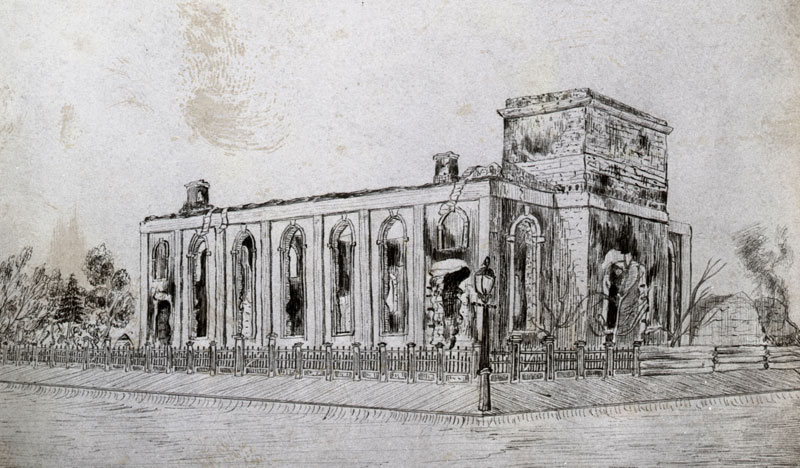
St. Lawrence Hall’s genesis lies in a great force of destruction. In 1849, a major fire swept through the area bounded by Adelaide, King, Church, and George streets, killing one and destroying 10 vital acres at the heart of the city. The original St. James Cathedral was ruined, as was the city’s main market at King and Jarvis.
The damage might have been worse were it not for heroic fire fighters who made the best of their primitive equipment and a well-timed rain shower.
No sooner had the fire been extinguished, the city hired architect William Thomas to design a replacement building for the site of the wrecked market. The finished three-storey structure, which was topped by a mansard roof and grand clock tower cupola, opened in 1850.
Thomas’ hall became the primary entrance to the St. Lawrence Market, which at the time was located north of Front Street. An arched entranceway on King Street led into an indoor shopping arcade connected to the market behind.
At the heart of the building, on the third floor, was an event space described in great detail in the 1858 Handbook of Toronto:
It was “100 feet long, 38 feet 6 inches wide, and 36 feet hight, with a gallery at the entrance end. The ceiling of the Hall is ornamented by flat hemispherical, enriched panelled, domed compartments, and lyres surrounding them.”
“When the large and magnificent chandelier is lighted up, and when the room is filled by such an assembly that which graced Jenny Lind’s concerts, it has a brilliant and most imposing effect. It is admirably suited for concerts, being easily filled by the voice, and having no echo to mar the performance, and is in fact the only place in the city for lectures and fashionable concerts.”
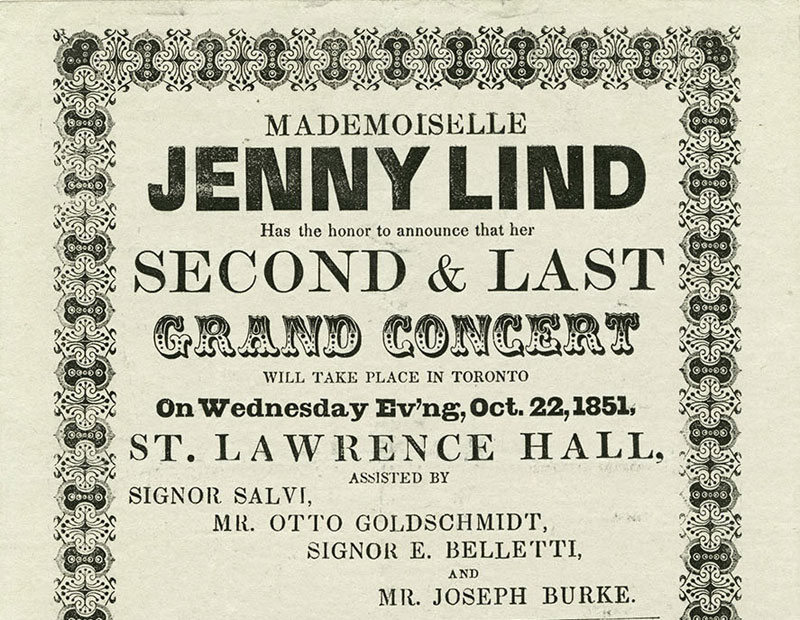
As the premier event space in Toronto, a dizzying range of prominent speakers, performers, and musicians appeared at St. Lawrence Hall during the 19th century.
The future King Edward VII (when he was still Prince of Wales,) Niagara Falls tightrope walker and all-round daredevil The Great Farini, Upper Canada Rebellion leader William Lyon Mackenzie, Canada’s first Prime Minister Sir John A. Macdonald, writer and abolitionist Frederick Douglass all trod the planks.
Showman and impresario P. T. Barnum bought legendary opera singer Jenny Lind—dubbed “the Swedish Nightingale”—to St. Lawrence Hall for three nights in 1851. Another Barnum act, General Tom Thumb (a dwarf born Charles Sherwood Stratton,) came for four nights in 1862.

As planned by architect Thomas, the ground floor was leased to retailers. There were stores on either side of the indoor shopping arcade and also facing the surrounding streets.
Early photos show gigantic signs for businesses such as the Toronto Tea Company and Graham’s Temple of Fashions crowding the fine, if eccentric, architectural detailing.
Much of the space on the east side of the building was leased to the Irish Catholic Benevolent Union, which advertised its presence with a sign for “St. Patrick’s Hall.”
In later years, likely in the 1890s, the third-floor St. Patrick’s Hall was stripped bare for one of the earliest basketball courts in Canada. Players had to avoid wooden roof beams to get the ball in the iron hoops at either end of the room.
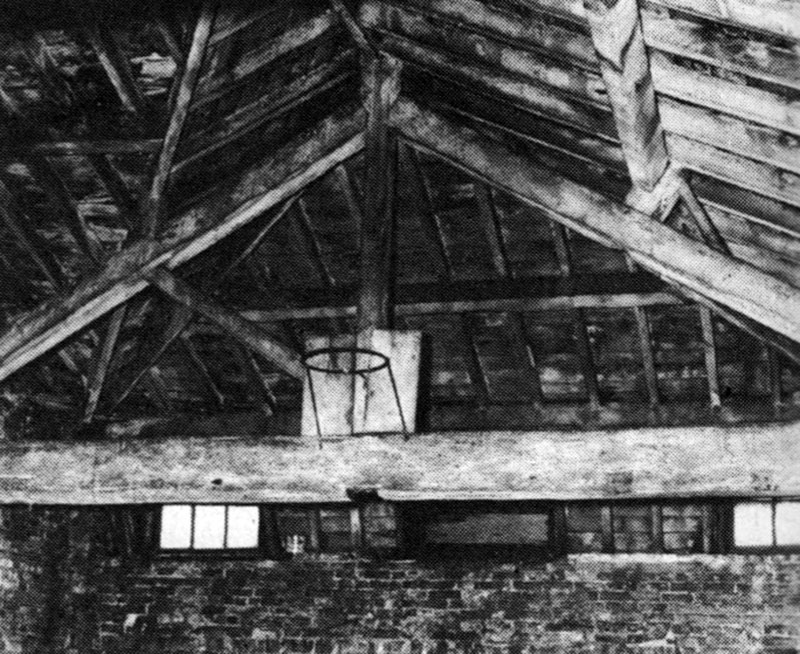
Among the notable features of the exterior are columns that are a close copies of those used on the ancient Temple of Jupiter Stator in Rome. Closer to the ground, on King Street, a number of carved men’s faces peer out from the sides of the building, representing fictional deities of Lake Ontario, the Niagara, and St. Lawrence rivers.
Near the roof, also facing King Street, the figure of Britannia, an Indigenous man with bow and quiver, and the crest of the Royal Arms of England form the City of Toronto coat of arms. The city’s motto at the time, “Industry, Intelligence, Integrity,” is carved below.
The building was topped with a public clock connected to a 966-kilo bell that chimed the hour. In the 1850s, this timekeeping device was a critically important piece of infrastructure.
Before affordable watches, the clocks at St. Lawrence Hall and Union Station were among the few ways of knowing the time of day on the street with any degree of accuracy.
Scientists at the observatory at University College send a signal to the town’s fire halls when the sun approached its peak at 11:55 am.
The fire halls would ring their bells, allowing anyone with a stopped or slowing timepiece to synchronize it with the rest of the city. The clocks at St. Lawrence Hall and Union Station were configured in the same way.
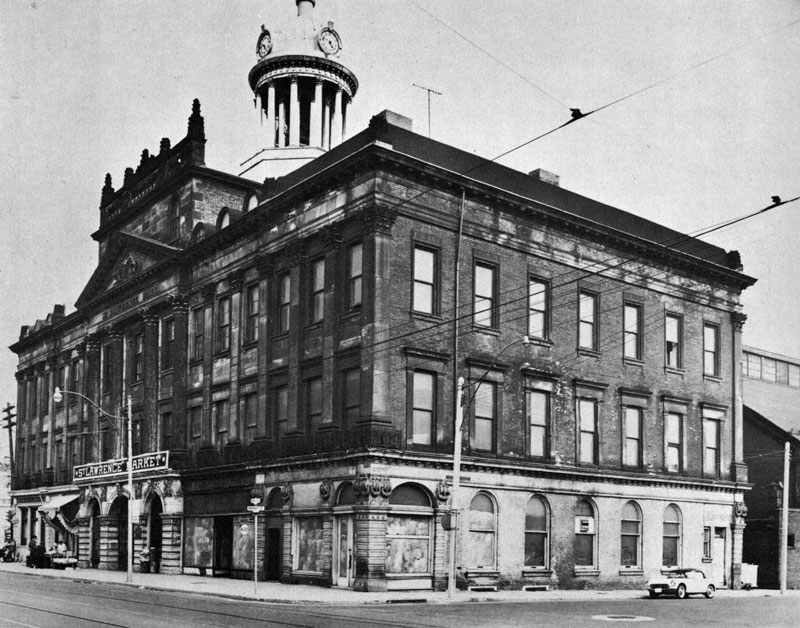
St. Lawrence Hall and its clock fell slowly out of favour in the 1900s. Bigger venues attracted major touring performers and the centre of the city shifted west, allowing the hall to become increasingly run-down.
Evidence of the building’s decline is clear from archival photos. Around the 1890s, the exterior appears caked in soot and grime, windows on the upper floors are broken, and the stores are offering things like stoves and ranges, tents, and other outdoor supplies.
By the 1950s, the 100-year-old building was in trouble. It lacked historical status and was increasingly fragile. Parts of the original structure had been ripped out and windows carelessly punched in the interior walls.
The southeast corner was badly sinking and the delicate stonework on the exterior was starting to crumble. Several rooms in the building were occupied by homeless people.
“In this century it had degenerated into a doss house for the unemployed,” read a booklet on the history of the hall.
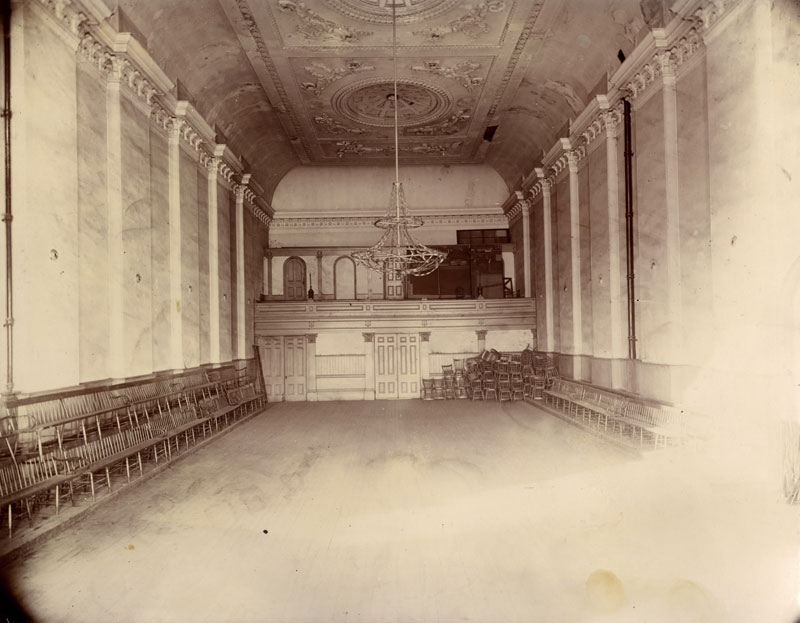
The building’s complex ownership arrangement was one the main obstacles to heritage protection. The city owned the land and the arcade corridor to the North Market, but all the other units were the property of private companies.
When the National Ballet moved into the upper floors in the 1950s, it started a long conversation about how to properly restore the building.
The city dithered over whether or not to buy St. Lawrence Hall and bring about the necessary repairs until plans for Canada’s Centennial began to solidify in 1961. Toronto Parks Commissioner George Bell envisioned using Centennial funds to extend St. James Park east from the cathedral to Jarvis Street and restore St. Lawrence Hall.
The first version of the city’s Centennial plan was much broader. It envisioned spending $16.8 million to construct a new repertory theatre and concert hall, rebuild the North Market, refurbish Massey Hall, and buy the St. Lawrence Hall land.
Over the next few years, various components of the project were ditched in an effort to keep costs down and the arts centre idea alive.
“One Toronto newspaper editorial compared the floundering arts centre to a leaky lifeboat from which one passenger after another was being ejected. That grey-haired old lady at the back [St. Lawrence Hall] would have to go, too, if the others were to survive.”
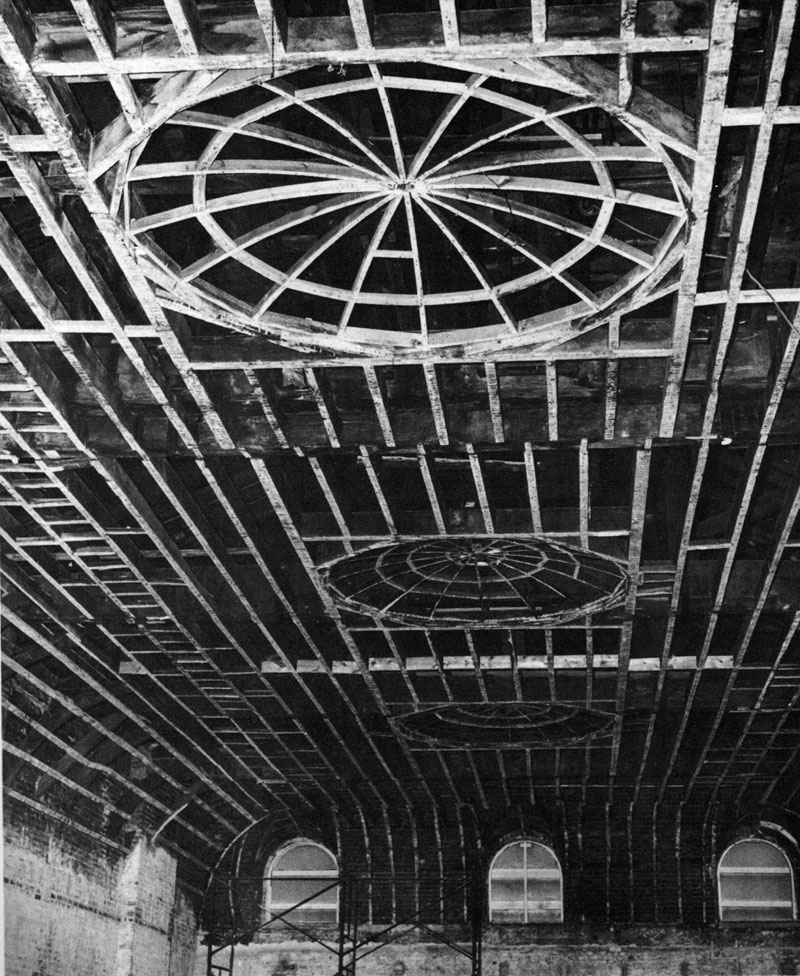
Eventually, the cash to restore St. Lawrence Hall was withdrawn, and the future of the building looked grim.
However, due to the tireless advocacy of architect and heritage activist Eric Arthur, the city, the Toronto Chapter of the Ontario Association of Architects, and the Toronto Construction Association banded together to fund $2 million of the restoration cost.
“Every growing city sooner or later reaches the point where it has to decide either to give way completely to commercialism at the expense of cultural values or steadfastly resist,” wrote J. I. Rempel, an and architect vice-president of the York Pioneer and Historical Society.
In 1966, builders and restoration experts began probing the building, stripping out debris and assessing the scale and scope of the project.
Expert masonry, woodworking, and plastering workers set about creating historically-accurate replacement parts and more than a century of dirt was sandblasted off the exterior. Arthur, the champion of the project, felt some of the exterior work was too heavy handed.
“Age is something we want to keep,” he said. “I look on St. Lawrence Hall as our Westminster Abbey. When they lose a cherub, they don’t replace it. We should be satisfied to retain the appearance of age; we don’t want newness.”
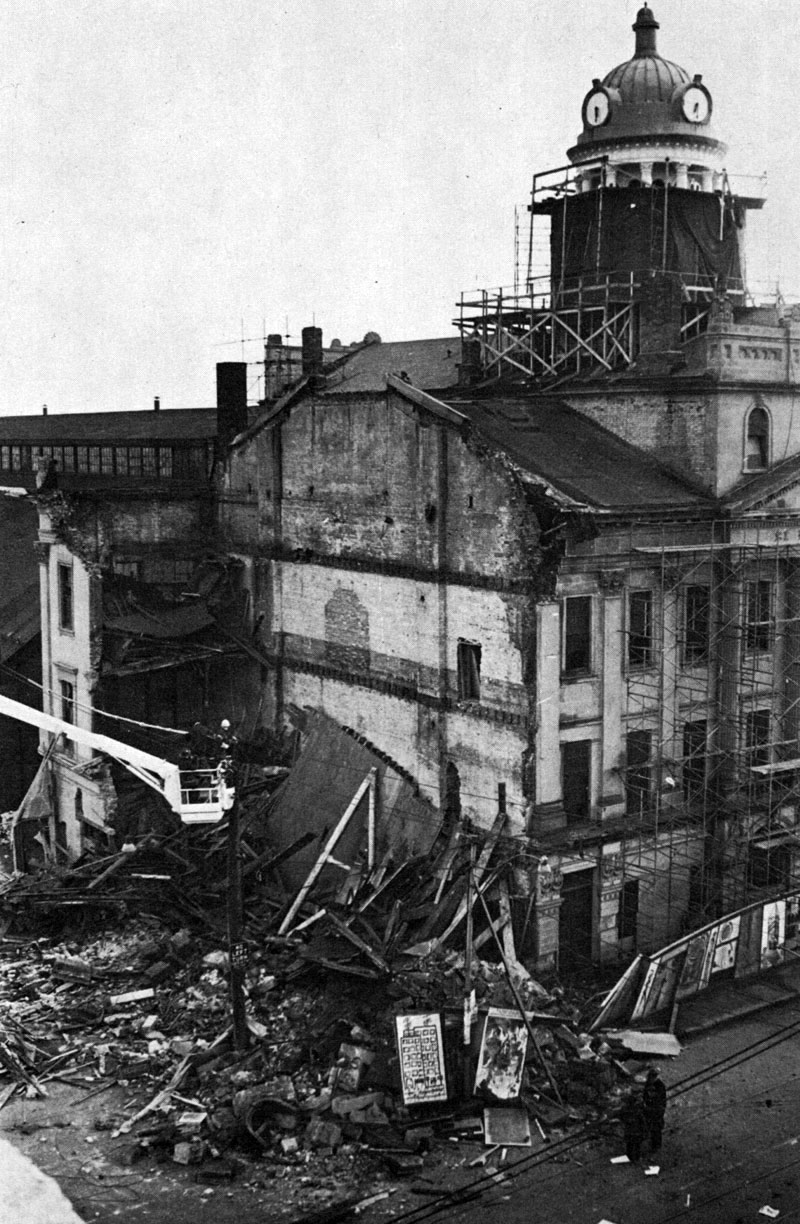
Just as work was hitting its stride, disaster struck. On March 10, 1967, site foreman Jack McGowan noticed mortar falling from the east wall and called for extra reinforcement. Around 4:25, as rush hour approached, more material began to fall and McGowan gave the order to evacuate the site.
Workmen halted traffic on King and Jarvis streets and minutes later the entire east wing collapsed in on itself. “The main floor just folded and everything above it fell inward,” McGowan said.
Rescue crews combed through the rubble, but found no-one trapped or injured.
With a third of the hall in ruins, the funders met to discuss the future of the project and agreed to continue, much to the delight of the Toronto Star.
“The restoration of old St. Lawrence Hall was one Centennial project on which everyone in Toronto was happily united,” wrote the paper.
“Our appetite for history has been whetted and we need the completion of St. Lawrence Hall to satisfy it. So light the torches and beat the drums. We’ve got a building to raise!”
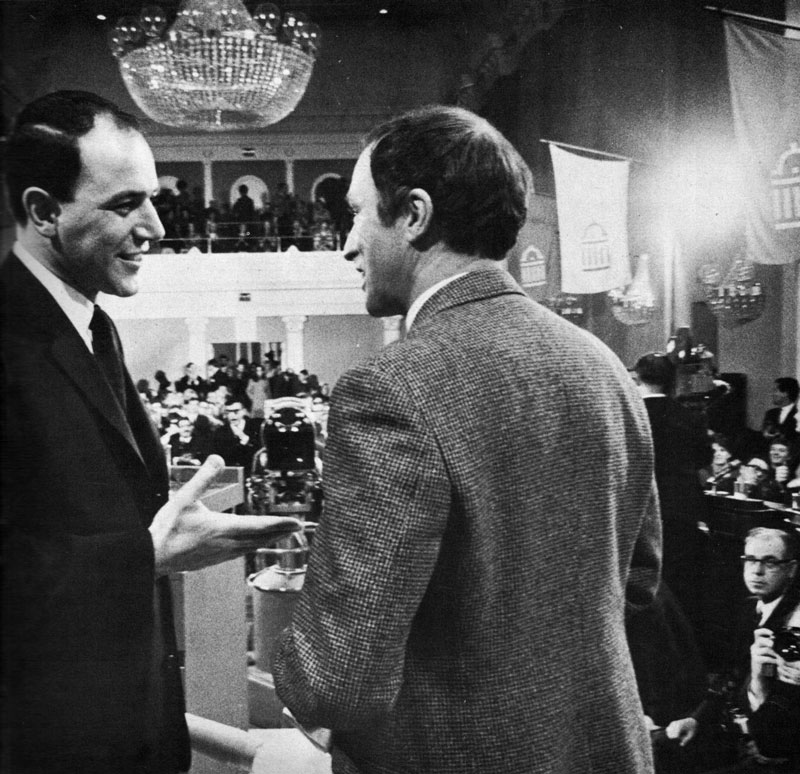
Strike action by skilled tradespeople delayed the project during the summer of 1967, but the reinforced and fully-restored St. Lawrence Hall was ready for its grand re-opening on December 28. The main hall had been completely overhauled and the ornate plaster ceiling lovingly recreated.
A new gasolier, so heavy it had to be anchored through the rooftop cupola, hung in the centre of the space. The shopping arcade that connected to the North Market was closed and its King Street entrance repurposed into the main entrance to the upper floors.
One of the first organizations to book the hall was the federal Liberal party. Leadership candidate Pierre Trudeau rallied for the support of his party in February, 1968.
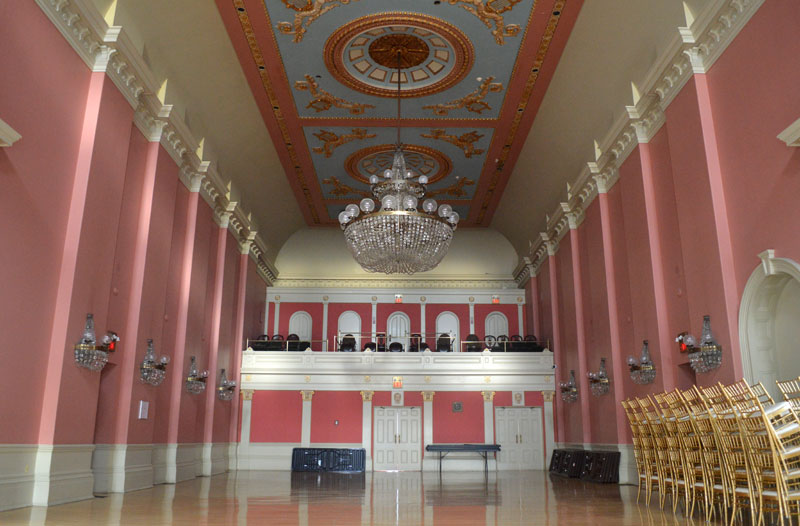
Although St. Lawrence Hall experienced a renaissance in the late 60s and 70s, it has once again fallen into relatively peaceful obscurity. The second floor is now City of Toronto offices and Heritage Toronto occupies part of the third. The practice space and office for Opera Atelier is in the attic.
The Great Hall is still available for weddings and other events, and the one-time basketball court in St. Patrick’s Hall is a meeting and boardroom.
Today, most people haven’t seen the Great Hall, the grand event space for which the building is named. That could change in the coming years with another overhaul planned as part of the new North St. Lawrence Market project.
In the meantime, the “grey-haired old lady” is still standing.



